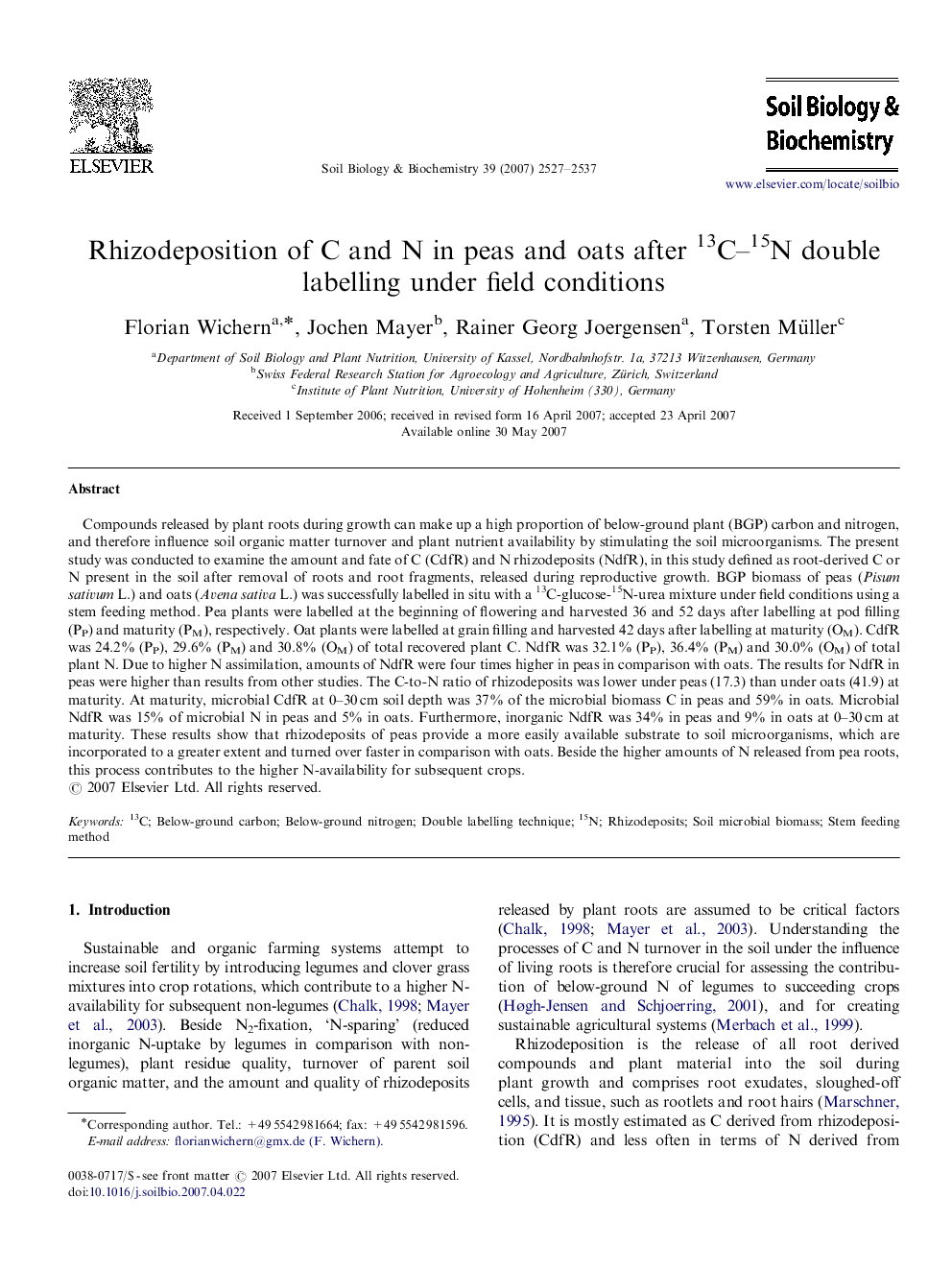| کد مقاله | کد نشریه | سال انتشار | مقاله انگلیسی | نسخه تمام متن |
|---|---|---|---|---|
| 2025916 | 1070013 | 2007 | 11 صفحه PDF | دانلود رایگان |

Compounds released by plant roots during growth can make up a high proportion of below-ground plant (BGP) carbon and nitrogen, and therefore influence soil organic matter turnover and plant nutrient availability by stimulating the soil microorganisms. The present study was conducted to examine the amount and fate of C (CdfR) and N rhizodeposits (NdfR), in this study defined as root-derived C or N present in the soil after removal of roots and root fragments, released during reproductive growth. BGP biomass of peas (Pisum sativum L.) and oats (Avena sativa L.) was successfully labelled in situ with a 13C-glucose-15N-urea mixture under field conditions using a stem feeding method. Pea plants were labelled at the beginning of flowering and harvested 36 and 52 days after labelling at pod filling (PP) and maturity (PM), respectively. Oat plants were labelled at grain filling and harvested 42 days after labelling at maturity (OM). CdfR was 24.2% (PP), 29.6% (PM) and 30.8% (OM) of total recovered plant C. NdfR was 32.1% (PP), 36.4% (PM) and 30.0% (OM) of total plant N. Due to higher N assimilation, amounts of NdfR were four times higher in peas in comparison with oats. The results for NdfR in peas were higher than results from other studies. The C-to-N ratio of rhizodeposits was lower under peas (17.3) than under oats (41.9) at maturity. At maturity, microbial CdfR at 0–30 cm soil depth was 37% of the microbial biomass C in peas and 59% in oats. Microbial NdfR was 15% of microbial N in peas and 5% in oats. Furthermore, inorganic NdfR was 34% in peas and 9% in oats at 0–30 cm at maturity. These results show that rhizodeposits of peas provide a more easily available substrate to soil microorganisms, which are incorporated to a greater extent and turned over faster in comparison with oats. Beside the higher amounts of N released from pea roots, this process contributes to the higher N-availability for subsequent crops.
Journal: Soil Biology and Biochemistry - Volume 39, Issue 10, October 2007, Pages 2527–2537